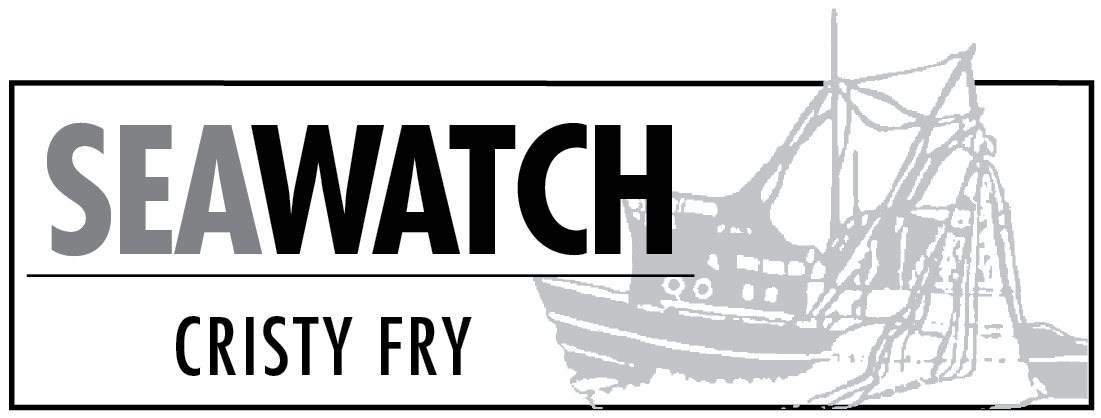Bering Sea crab fishermen are getting pounded from all sides.
In addition to the potential multimillion dollar market hit from missing the beginning of the red king crab season as a result of the government shutdown, the opilio crab quota is down 19 percent, at 54 million pounds.
The quota has been on a roller-coaster ride recently, going from 54 million pounds in 2010 to 89 million pounds in 2011 and back down to 66 million pounds last season.
The most dramatic rise and fall of the opilio quota in recent memory took place in the late 1990s, when it rose from 66 million pounds in 1996 to 243 million pounds in 1998, then fell to a shocking 34 million pounds in 2000.
KUBC public radio in Unalaska reports that Doug Pengilly of the Alaska Department of Fish and Game spent time explaining the cut to fishermen at a meeting in Seattle, with Kodiak and Unalaska fishermen attending via conference call.
Pengilly said the lower quota is because surveys of the fishing grounds turned up less opilio this year, which was a surprise, considering that ADF&G’s statistical model predicted that the snow crab population would increase.
“The model is apparently trying to carry through crab that showed up in 2010 at smaller sizes, and keeps them coming through,” Pengilly said. “They didn’t show up this year, but the model is saying, ‘They’re coming through.’”
In response, Fish and Game decided to use different data to come up with a catch limit on snow crab, and disregard the part of the model that didn’t seem to be working to avoid overfishing.
They’re not discounting it altogether, though. Pengilly said Fish and Game will use that formula again in future years.
“Maybe the model’s right,” he said. “There is a possibility.”
The St. Matthew Island blue king crab fishery is closed, having re-opened in 2010 after a 10-year hiatus with a 1.6 million pound quota, risen to 2.4 million pounds in 2011, and fallen back down to 1.6 million pounds last year.
The Pribilof Islands blue and red king crab seasons remain closed. The last fishery for those stocks took place in 1998, when there was a 491,000 pound quota for red crab and a 608,000 pound quota for blue crab.
There has been a 150,000 pound quota for Pribilof golden king crab for several years, but no one has fished it since 2005.
The Alaska Marine Safety Education Administration is holding a Fishing Vessel Drill Conductor training in Homer Oct. 25.
Course instructors Chris Lopez and Rob Hulse will cover these topics: cold water survival skills; EPIRBs, flares and maydays; man overboard recovery; fire fighting; immersion suits and PFDs; emergency drills; helicopter rescue; life rafts; and abandon ship procedures.
The course takes place aboard the F/V Dream Catcher, located at the end of E float, and includes an in-water practicum.
Bring your immersion suit, photo ID, a change of clothes, a pen and lunch.
If you do not have an immersion suit, contact AMSEA with your immersion suit size.
Previous courses have been free for commercial fishermen; however, the cost is now $95, after an $80 scholarship from DCCED and NIOSH. The cost for non-fishermen is $175.
That is mostly due to Coast Guard budget cuts, according to AMSEA training coordinator Rick Petersen.
“We are a non-profit,” he said. “We’re not trying to make money. We’ve been offering it for free for many years because we had a Coast Guard contract that was paying the bills.”
However, due to the so-called sequestration, across-the-board funding cuts in the federal government, requests for proposals have been stalled.
“We don’t know if or when we’ll have another chance at that contract,” Petersen said. “It probably won’t be until later on this winter that we can even apply for it.”
He said the rumor was that there was a line item for it in the Coast Guard budget, but due to the government shut-down they are not able to even ask about it.
Petersen said that the course, as well as monthly drills, is currently required for fishermen operating outside the 12-mile boundary line, and that the 2010 Coast Guard Re-authorization Act, whenever it becomes regulation (possibly by 2015), requires it for all commercial fishermen.
However, even though it is not currently mandatory for all fishermen, it is still a good idea for all mariners.
“It helps people prepare for the most common at-sea emergencies,” he said.
Register online at www.amsea.org, or call 907-747-3287.
The International Pacific Halibut Commission’s Interim Meeting will be held Dec. 4 and 5 at the offices of the IPHC in Seattle.
The meeting will begin at 7:30 a.m. Alaska time on Wednesday and run through Thursday afternoon.
There will be a webcast of all meetings except finance and administration, and the public will be able to submit questions to presenters and commissioners.
The interim meetings are used to present the staff recommendations for quotas.
Results from the meeting, including staff assessment of the stock and the preliminary harvest decision table, will be published in a news release and made available on the IPHC website after the meeting.
The draft agenda, registration for the webcasts and other interim meeting information will be posted at the meeting page of the commission’s website, http://www.iphc.int/meetings-and-events/340-im2013.html.
The information will be updated as the agenda and other details are finalized.
The public also is invited to submit requests for 2014 regulatory changes by Nov. 1. The submission form can be downloaded from the annual meeting page of the commission’s website.
A summary of all proposals will be posted on the IPHC website when available.
The annual meeting, when quotas are finalized, season dates announced and regulatory changes, if any, are made, is scheduled for Jan. 13-17 at the Grand Hyatt hotel in Seattle.
It will be the 90th annual meeting of the IPHC.
Cristy Fry has commercial fished out of Homer and King Cove since 1978. She can be reached at realist468@gmail.com.



